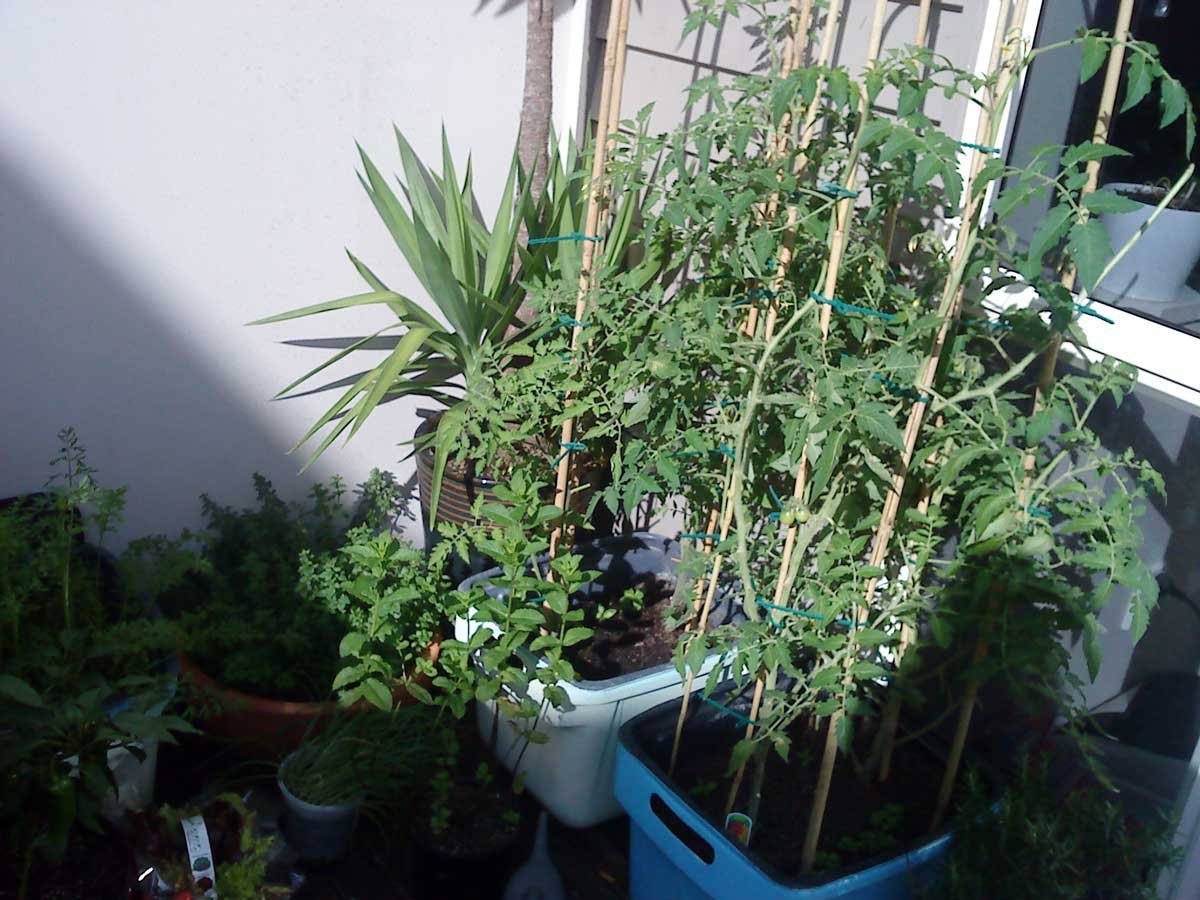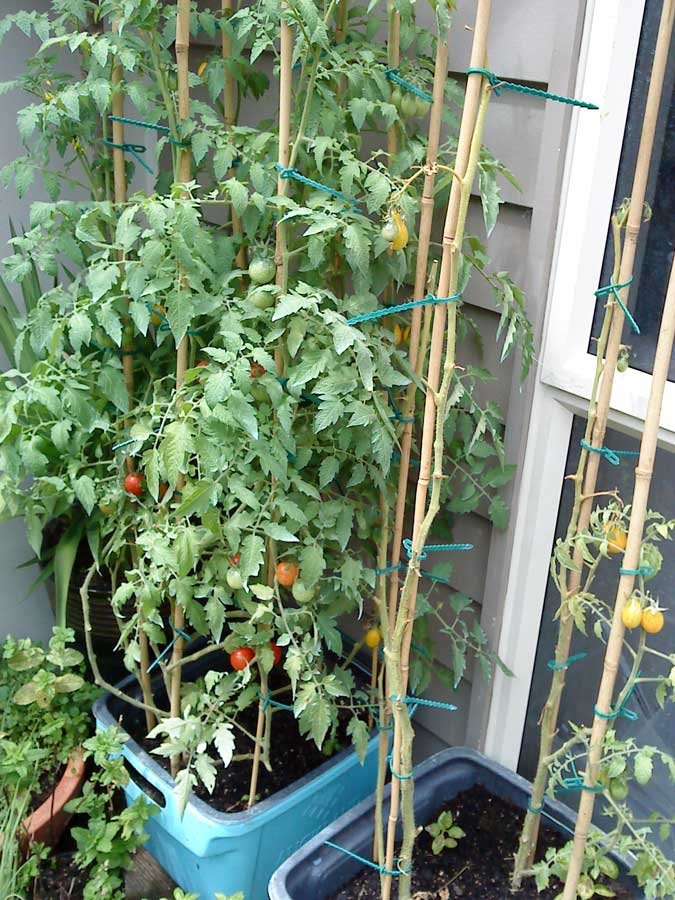We all start somewhere. For me, my gardening journey really began in containers. Specifically, a bunch of old recycling bins I managed to round up when Auckland switched to wheelie bins, and a collection of pots that I inherited, found, or otherwise cobbled together.
I’d learned a few things about gardening as a child, but anything I am now really started in 2009-ish on our central-Auckland patio. Where I had a watering can and no hose.
Back then, I could literally only dream of owning as much space as I do now. I didn’t know much, and I didn’t have much. But I did a pretty good job with what I had.
There’s a few things I’ve learned over the years that sometimes I wish I could go back in time and share with past-me. They would have helped a lot. But writing them down shows how far I’ve come. So maybe some newer gardeners who are learning in containers and pots in 2020 can learn from my mistakes.
Set up a wormfarm
This is my biggest ‘regret’, and the number one thing I wish I knew back then. Thinking of how much organic waste we used to send down the waste disposal makes me pretty sad. Installing a wormfarm is my top tip for small-space and urban gardeners.
Wormfarms don’t have to take up much space. They’re not messy or smelly (if they are, something’s wrong). A wormfarm in the corner could have turned our entire flat’s organic waste into living soil and instant fertiliser. Plus, we would have had some easy-care pets.
A wormfarm costs anywhere from $70-400 brand new – though (shameless plug), I have one on $1 reserve on TradeMe at the moment. You can pick up worms for $50 a box in hardware stores (or $10 in my online store). But once you’ve made that initial investment, they’ll just keep going forever.
You have no idea how much money I could have saved over time between the worm wee fertiliser and the vermicast – though, speaking of…
Recycle your soil
Honestly, I used to buy new soil every time I replanted my pots. WHY?! This is the most embarrassing thing and I almost didn’t want to admit to it in this blog. Looking back, I still don’t know why I did it. It was really dumb.
I filled my pots with 2/3s potting mix and 1/3 Zoo Doo. That was perfect. Then, at the end of the season, I threw it out and started again. WHY?! It wasn’t even at its best yet!
Between the Zoo-Doo and the worm castings, that soil could have become alive – even within my containers. Alive soil is healthy soil. Healthy soil equals healthy plants. Healthy soil retains moisture more effectively without compaction. At most, adding some compost on top between plantings was all I needed to do. Sigh.
These days, all our soils get recycled. If something was growing in a pot and it dies, that soil goes into a bin and reused down the track. Nothing is thrown away.
Give plants room to breathe
When I started out, I would plant 4 tomato plants in one recycle bin. I bought the 6-packs of plants because I thought I was getting a better deal.


But what I got – year after year – was downy mildew. I filled my cupboard with copper and sulphur products. I sprayed and tried my best to control it. Looking at the photo at the top of this post (from December 2012), I can see that after a few years, I got with the program and just planted one really big plant instead.
Giving your plants enough space prevents fungal infections like powdery/downy mildew. Buying bigger plants is more expensive, but worth the investment if you can only grow a few things.
Grafted tomatoes will do better than seedlings – and you can even get double-grafted tomatoes if you want to grow more than one variety! The bigger the plant when you put it in, the faster it will establish and provide the food you want.
Invest in irrigation
My garden was on the deck, which was a floor above the ground, and accessed through the living room. I often scratched my head about how on earth I could get a hose out there. And I couldn’t, not really.
So I lugged my 10l watering can between the kitchen sink and the garden repeatedly, day after day, until all my plants got diseases or went to seed and I gave up because it was too hard.
I have since conceded that I suck at watering. I think most of us do. Even if we’re good at the beginning of the season, by the end, life has happened and maybe we got a little bored. Admitting I suck was the first step to combatting my suckiness.
In the intervening years I have discovered irrigation, and I think I could have rigged up a system where the kitchen tap could have been attached to a hose through the living room, out the window, to a fixed irrigation system that watered the configuration of my pots directly. Something like this was probably the missing piece of the puzzle.
It still would have involved some daily work to connect up the hose – and the threat of flooding my (rented) living room would have existed – but it would be easier than lugging the watering can.
Use mulch
Related to watering, and my powdery mildew problem. I could have reduced both by using mulch.
Pea straw would have been perfect for me. These days, it’s widely available at about $20 for a bag big enough for my entire balcony garden. A layer of mulch on top of the soil would have reduced the evaporation of water out of my containers, retaining more moisture, and reducing my need for irrigation.
It would have shielded my plants from fungal spores that can cause diseases. And it would have improved my soil long-term.
These days, I swear by mulch – I use lawn clippings now I have so much grass. I wish I’d learned about it sooner.
Grow potatoes
WHY didn’t I grow potatoes?! They are perfect in containers! They’re legit fun to grow and harvest! They’re fast AND easy! And – unlike most things grown in containers – they even come close to making economic sense to grow!
I’m sad for past-me that it took me so long to learn the absolute joys of growing potatoes. Now, they are my favourite thing to grow and harvest. If you’ve never grown seed potatoes in your container garden, I highly recommend you give it a try.
Don’t put gravel in the bottom of your containers
It’s debunked hooey.
The benefit of hindsight
It’s easy to be harsh on my old self for not knowing what I didn’t know. Sometimes it takes years to accumulate knowledge – and I have the benefit of a decade of accumulation and 3 certificates in plants and horticulture between then and now.
Heck, a few years after I wrote this post, I was even featured on Rent.com giving tips for gardening on patios!
Every failure is a chance for learning, and I’ve (failed and) learned so much since my days in containers. I’ve had the opportunity to learn (and fail) on a larger scale. I can see things now that I couldn’t even imagine at that stage in my journey.
I hope this blog has given you some ideas for improving your own container garden. Imagine what we might know in another decade!


